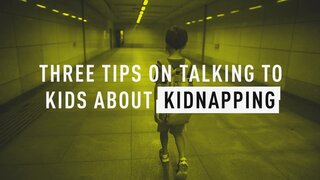Create a free profile to get unlimited access to exclusive videos, breaking news, sweepstakes, and more!
'Avoid, Deny, Defend': What To Do During An Active Shooter Situation
Active shooter situations are on the rise — here's how you can keep yourself safe if you find yourself in one.
It’s become sadly commonplace to get an alert on your phone that there’s an active shooter situation developing somewhere in the U.S. Schools, offices and concerts can be turned from safe spaces into scenes of terrifying tragedies in the span of a few seconds.
Active shooter events are on the rise, according to a recent FBI report, which found that at least 221 people were killed and 722 were wounded in mass shootings in 2016 and 2017. From 2000 to 2016, 1,486 people were hurt or killed in active shooter incidents.
To state the obvious, nobody wants to find themselves in the midst of a mass shooting. But with this shocking rise in active shooter events, more and more people are asking themselves: What do you do if you find yourself caught in one?
As Dr. Pete Blair, a professor of criminal justice at Texas State University who specializes in active shooter events, noted, there are ways to prepare. (Blair is also the executive director of the Advanced Law Enforcement Rapid Response Training (ALERRT) Center.)
“What we teach is avoid, deny, defend,” Blair told Oxygen.com. So what exactly does that mean?
AVOID
“The first option is if you can get away from your attacker, you want to avoid your attacker and get away," Blair explained.
This advice is backed up by The Department of Homeland Security, which has created a page dedicated to handling an active shooter event that mirrors much of Blair’s advice.
“Getting away from the shooter or shooters is the top priority,” it stated. “Leave your belongings behind and get away.”
It urges people to help others escape if possible, but to evacuate regardless of whether others agree to follow.
“Warn and prevent individuals from entering an area where the active shooter may be,” it said. “Call 911 when you are safe, and describe shooter, location, and weapons.”
DENY
Blair said that if fleeing is not possible, denying access to your location is the next option.
“Say you’re sitting in an office or classroom and you hear gunfire in a hallway and you are worried that if you go out there you could be shot — keep that person from getting to you. Closing doors, locking the doors, barricading them.”
Homeland Security also urges people to silence all electronic devices and make sure they won’t vibrate when hiding.
“Don’t hide in groups — spread out along walls or hide separately to make it more difficult for the shooter,” it stated. “Your hiding place should be out of the shooter's view and provide protection if shots are fired in your direction.”
DEFEND
Blair said the last resort option is to defend yourself from the shooter.
“If you find yourself in really close proximity to that person and they are trying to murder you, you have a legal right to defend yourself,” he explained. “We encourage ... people to not let themselves be killed.”
He said typically active shooters don’t stop shooting until they are physically restrained or dead.
“They don’t negotiate,” Blair explained. “They look for victims and find as many victims as they can.”
He added that in about one of every six events that he looks at, potential victims who take action to defend themselves stop the attacker. One such event was the 2011 shooting of U.S. Representative Gabrielle Giffords and 18 others who were attacked during a constituent meeting held in an Arizona supermarket parking lot.
“When the guy stopped to reload, they tackled him and it prevented him from shooting anybody else,” Blair said. “If the choice is between letting that person shoot and kill you and trying to defend yourself, it’s better to try to defend yourself.”
Homeland Security said that when fighting against a shooter, you should act as aggressively as possible against the shooter.
Throwing items and improvising weapons to distract and disarm the shooter is also recommended by Homeland Security. “Recruit others to ambush the shooter with makeshift weapons like chairs, fire extinguishers, scissors, books, etc,” it stated. “Be prepared to cause severe or lethal injury to the shooter.”
ASSESS
Blair urges people to assess their environment for options in case such an event unfolds.
“If I'm usually in an office, then I want to think about my office, how my office works and where my exits are, what I can use to barricade a door, and other things I may use to defend myself," he said. "Put it on your cognitive radar and you have a script that if this happens, this is what I'm going to do.”
ADAPT
People should also understand that they may need to think on their feet, Blair noted.
“We encourage you not to act like there is one response, that if you choose, will always work the way you want it to,” he said. “You may need to change. You may start off trying to avoid the attacker because you heard gunfire somewhere else and then you turn a random corner and there the attacker is.”





























